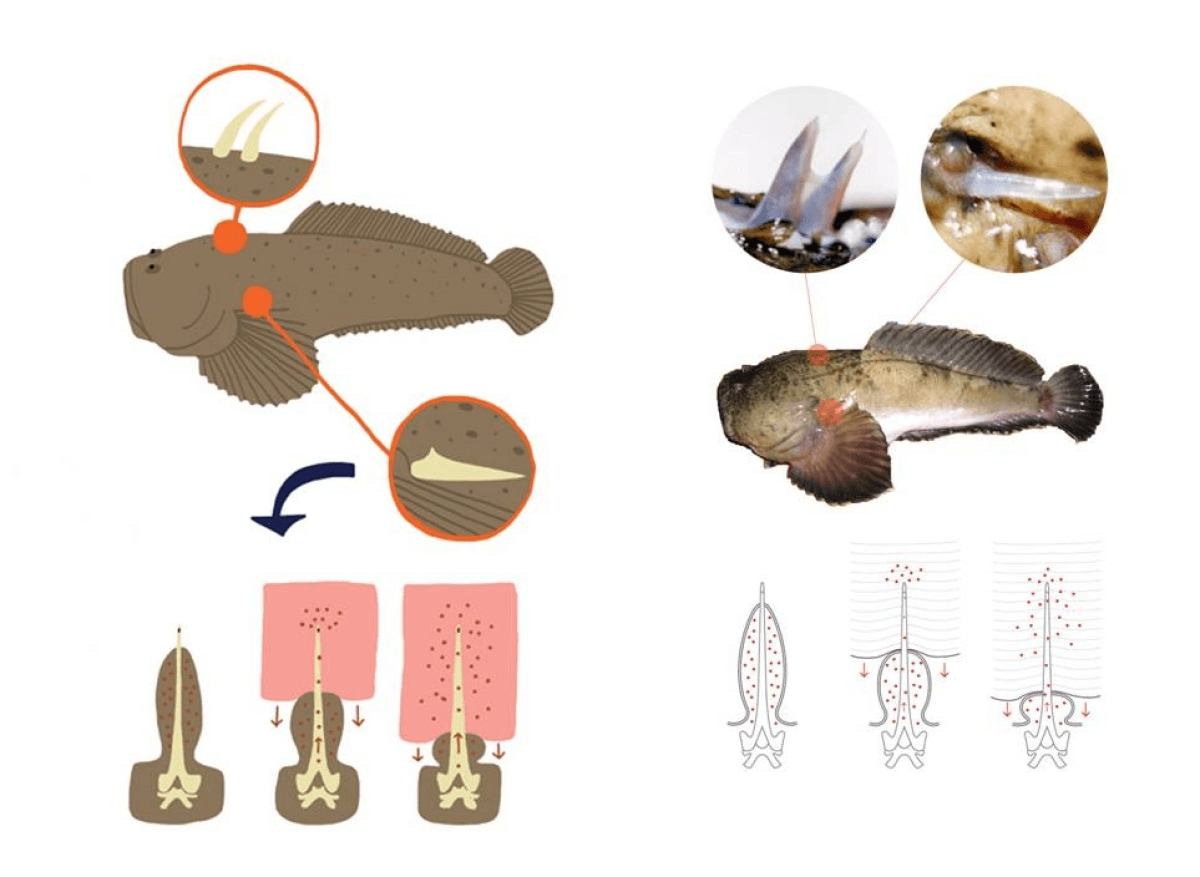SAO PAULO, Brazil — The venom of a deadly toadfish could be a surprise remedy that treats asthma in humans. Scientists at the Butantan Institute in São Paulo, Brazil say a molecule found in the venom of the toadfish Thalassophryne nattereri has demonstrated its ability to control lung inflammation and could serve as the foundation for a more effective asthma medication.
The T. nattereri is a small fish that dwells in calm shallow coastal waters in North and Northeast Brazil. Locally known as niquim, an Indigenous term for fish, this toadfish possesses a venom apparatus comprising two dorsal and two lateral spines covered by a membrane connected to venom glands at the base of its fins. When the spines penetrate a victim, the venom is released into the duct via the integumentary sheath enclosing the gland. When stepped on or touched, the toadfish defends itself by injecting venom, causing intense pain, swelling, and potentially cell death.
The research on T. nattereri venom began in 1996 with the aim of analyzing its toxins for the development of treatments for accidents caused by these fish. However, the scientists made a surprising discovery during their investigations. They found a small molecule, a peptide, within the venom that exhibited anti-inflammatory properties — a completely novel molecule previously undiscovered.
Experiments involving mice treated with TnP (T. nattereri peptide) revealed that they displayed no airway hyperreactivity or lung remodeling. The TnP molecule acted systemically on secondary lymphoid organs and locally in the lungs. It inhibited the production of cytokines Th2 and Th17 while also preventing hyperplasia of mucus-producing cells. Additionally, it reduced the thickening and deposition of sub-epithelial collagen. The authors of the study stated that TnP has the potential to be a candidate molecule for treating airway remodeling associated with inflammatory diseases like asthma.

The lead researcher, Mônica Lopes-Ferreira, a biologist at the Center for Research on Toxins, Immune Response, and Cell Signaling (CeTICS), expressed her excitement about this discovery.
“We now mean to continue with the research. The more we discover, the more we’ll know about the diseases TnP can treat. It will also be very important to partner with a pharmaceutical company that wants to invest in TnP so that a medical drug can be developed,” Lopes-Ferreira says in a university release. She emphasized the importance of protecting this Brazilian discovery by filing for a patent.
This is not the first breakthrough involving T. nattereri. In a study supported by FAPESP (The São Paulo Research Foundation) and conducted by CeTICS, a molecule with potential action against sclerosis was discovered in this toadfish species. The findings of that study, published in the journal Toxicon in October 2016, showcased further possibilities for the application of T. nattereri’s unique properties.
The potential of toadfish venom to revolutionize asthma treatment presents an exciting avenue for further research and development. As scientists delve deeper into the properties of this molecule, it holds the promise of providing relief for individuals affected by asthma and potentially other inflammatory conditions.
This new study is published in the journal Cells.
You might also be interested in:
- Vitamin D may not protect against asthma attacks after all, new findings suggest
- Asthma cured in two weeks? Targeting one protein in the airways could unlock ‘permanent’ treatment
- Deadly spider venom can help heart attack survivors recover: ‘This could be life-changing’

